Glossary
Plant Care Library
G
Gardenia Plant
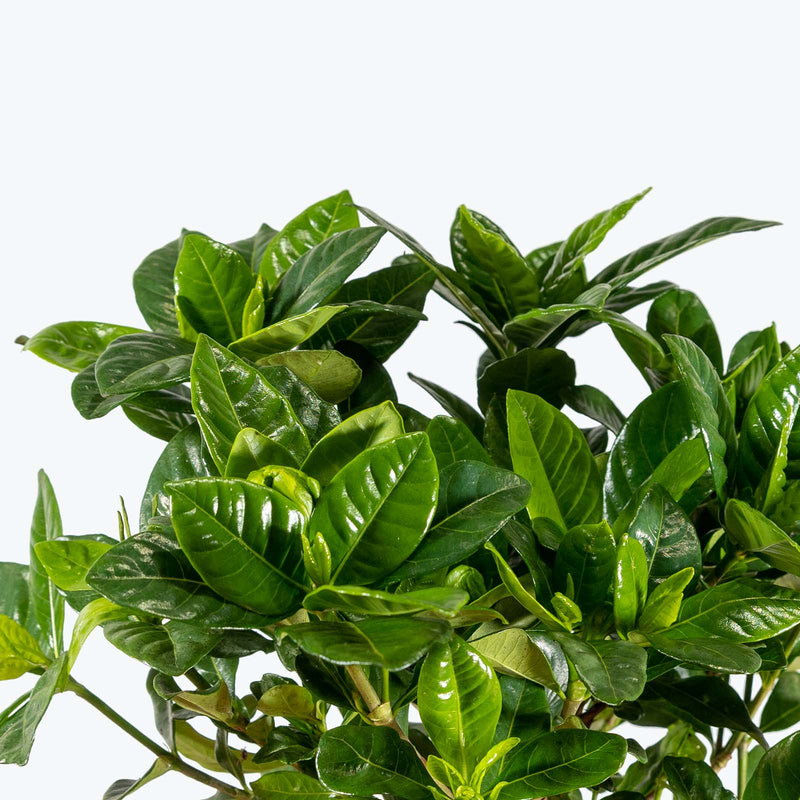
How to care for Gardenia Plant
Gardenia Plant loves as much sun as possible. The best spot for them is where they can see the sun during the majority of the day.
Gardenia Plant will do their best and flower profusely in bright light. A nice bright place outside would be on a sunny balcony, deck, or backyard; inside your home, it would do best on a sunny window sill. Remember that plants will grow and flower based on how much light they receive.
Allow the top quarter of the soil to dry before watering Gardenia Plant again. This usually takes about 3 - 4 days in an average home environment. It will vary depending on the time of year, your environment and lighting conditions.
Gardenia Plant likes a high humidity environment, give them a mist daily in the morning. Alternatively, you can put them around a humidifier.
Gardenia Plant prefers slightly acidic soil, consistent moisture, and stable temperatures to thrive. Avoid cold drafts or sudden temperature changes, which can cause bud drop. Fertilize every 4–6 weeks during spring and summer with an acid-loving plant fertilizer. Prune after blooming to shape the plant and encourage fuller growth. When you first bring your gardenia home, it is essential to have the best spot picked out because they do not respond well to being moved around. This spot should have plenty of light, at least half a day of direct sun. For best flowering indoors, provide bright light and extra humidity — a pebble tray or humidifier can help prevent crispy edges on leaves and buds.
Gardenia Plant is moderately toxic and can cause some adverse reactions when ingested so it is best to not let your pets eat it, which we advise for all plants in general. The severity of the reaction will depend on how much of the plant is ingested but, if you know your pet typically does not eat your plants, this plant will be suitable for your home..
View PlantGeogenanthus Ciliatus

How to care for Geogenanthus Ciliatus
They should not be in a position to see the sun directly, although early morning or late evening sun is fine. Filtered sunlight through a sheer curtain is best and most homes are comprised primarily of indirect sunlight. The best spot for them is where they do not see the sun during the majority of the day but still get bright, indirect light.
They will thrive in bright light, but also can tolerate medium light. A good medium-light place in your home would be in the middle of a room that has a regular size window. They can be placed anywhere between the middle of the room and the window. Remember that plants will grow based on how much light they receive.
They need to be watered when the top half of the soil is dry to the touch. That usually takes about 1 week in an average home environment. It will vary depending on the time of year, your environment and lighting conditions, but it's always safer to underwater or give the soil a check before you water again. Expect to water more often in brighter light and less often in lower light.
They like a high humidity environment, give them a mist daily or as often as possible. Alternatively, you can put them around a humidifier. Although they won't die if they don't receive enough humidity, their leaves may have some dry, crunchy, or yellow edges.
These plants need very high humidity, around 90% is ideal. It is also very important to stay on top of watering your plant as their soil should never be allowed to dry out completely but it should also not be kept soaking wet.
This plant is moderately toxic and can cause some adverse reactions when ingested so it is best to not let your pets eat it, which we advise for all plants in general. The severity of the reaction will depend on how much of the plant is ingested but, if you know your pet typically does not eat your plants, this plant will be suitable for your home..
View PlantGeogenanthus Poeppigii

How to care for Geogenanthus Poeppigii
Geogenanthus Poeppigii should not be in a position to see the sun directly, although early morning or late evening sun is fine. Filtered sunlight through a sheer curtain is best and most homes are comprised primarily of indirect sunlight. The best spot for them is where they do not see the sun during the majority of the day but still get bright, indirect light.
Geogenanthus Poeppigii will thrive in medium to bright light, but also can tolerate low light. A good medium-light place in your home would be in the middle of a room that has a regular size window. They can be placed almost anywhere in the room, but remember, plants will grow based on how much light they receive.
Geogenanthus Poeppigii needs to be watered when the top half of the soil is dry to the touch. That usually takes about 1 week in an average home environment. It will vary depending on the time of year, your environment and lighting conditions, but it's always safer to underwater or give the soil a check before you water again. Expect to water more often in brighter light and less often in lower light.
Geogenanthus Poeppigii likes a high humidity environment, give them a mist daily or as often as possible. Alternatively, you can put them around a humidifier. Although they won't die if they don't receive enough humidity, their leaves may have some dry, crunchy, or yellow edges.
Geogenanthus Poeppigii needs very high humidity, around 90% is ideal. It is also very important to stay on top of watering your plant as their soil should never be allowed to dry out completely, but it should also not be kept soaking wet.
Geogenanthus Poeppigii is moderately toxic and can cause some adverse reactions when ingested so it is best to not let your pets eat it, which we advise for all plants in general. The severity of the reaction will depend on how much of the plant is ingested but, if you know your pet typically does not eat your plants, this plant will be suitable for your home..
View PlantGolden Barrel Cactus

How to care for Golden Barrel Cactus
Golden Barrel Cactus enjoys some direct sun, but they'll also do well in bright, indirect light. It is best to place this plant somewhere where it will receive some nice morning sun, or a couple hours of afternoon sun, and then indirect light the rest of the day.
Golden Barrel Cactus will do best in bright light. A nice bright place inside your home would be on the window sill or a stool that is right next to a window, either with or without blinds, depending on if the plant can handle sun. Remember that plants will grow based on how much light they receive.
Golden Barrel Cactus likes the soil to be completely dry before the next watering. That usually takes about 4 weeks in an average home environment. It will vary depending on the time of year, your environment and lighting conditions, but for them, it's always safer to underwater or water when you see signs of lack of water (i.e. wrinkly or soft leaves). Water a little more often in the warmer months!
Their humidity requirement is low, so do not mist Golden Barrel Cactus or put them in an enclosed terrarium.
As with all succulents, overwatering is sure to be fatal, so err on the side of too dry rather than too wet, never letting Golden Barrel Cactus sit in water. If the side of the plant facing the sun starts to turn yellow or brown, move the plant to a spot where it will receive less direct sunlight than it was receiving.
Golden Barrel Cactus is moderately toxic and can cause some adverse reactions when ingested so it is best to not let your pets eat it, which we advise for all plants in general. The severity of the reaction will depend on how much of the plant is ingested but, if you know your pet typically does not eat your plants, this plant will be suitable for your home..
Learn MoreView PlantGreen Tea Plant
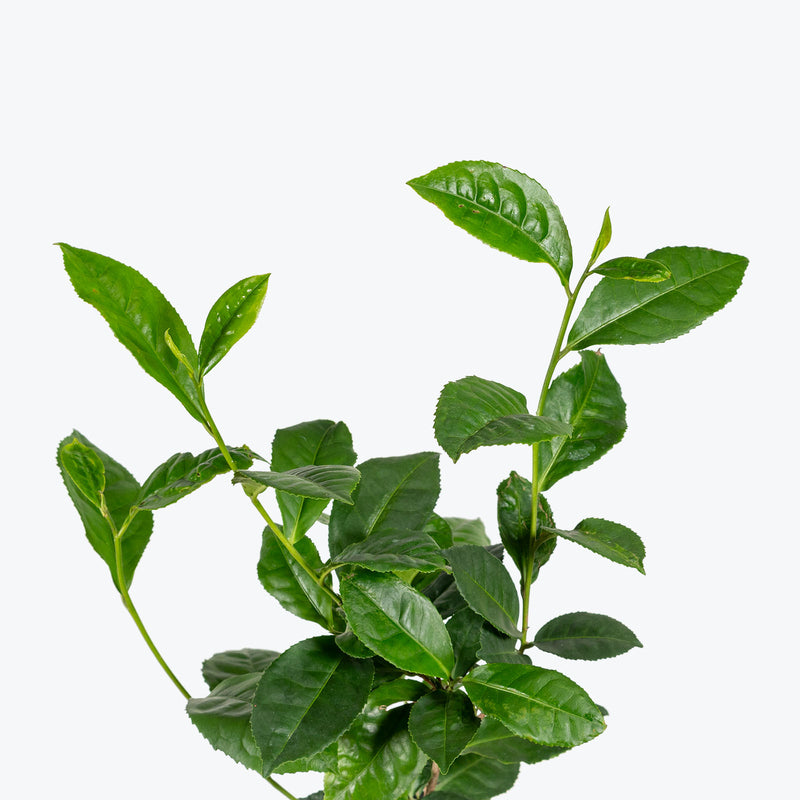
How to care for Green Tea Plant
Green Tea Plant should not be in a position to see the sun directly, although early morning or late evening sun is fine. Filtered sunlight through a sheer curtain is best and most homes are comprised primarily of indirect sunlight. The best spot for them is where they do not see the sun during the majority of the day but still get bright, indirect light.
Green Tea Plant will thrive in bright light, but also can tolerate medium light. A good medium-light place in your home would be in the middle of a room that has a regular size window. They can be placed anywhere between the middle of the room and the window. Remember that plants will grow based on how much light they receive.
Allow the top quarter of the soil to dry before watering Green Tea Plant again. This usually takes about 3 - 4 days in an average home environment. It will vary depending on the time of year, your environment and lighting conditions.
Green Tea Plant will do well in average humidity environments but will appreciate a little bit of humidity if provided, give them a mist daily or get a humidifier! Excess humidity combined with heavy soils can cause fungal diseases.
Container grown Green Tea Plants should be planted in a pot with drainage holes. Fertilize with an acid-loving plant fertilizer in the spring to encourage healthy growth and flowering. Pruning can be done to shape the plant and encourage bushier growth; however, be mindful that excessive pruning can reduce flowering and leaf production. Pay close attention to tea plants grown in containers, and never allow the soil to become completely dry.
Green Tea Plant is moderately toxic and can cause some adverse reactions when ingested so it is best to not let your pets eat it, which we advise for all plants in general. The severity of the reaction will depend on how much of the plant is ingested but, if you know your pet typically does not eat your plants, this plant will be suitable for your home..
View PlantGrinchmas Tree
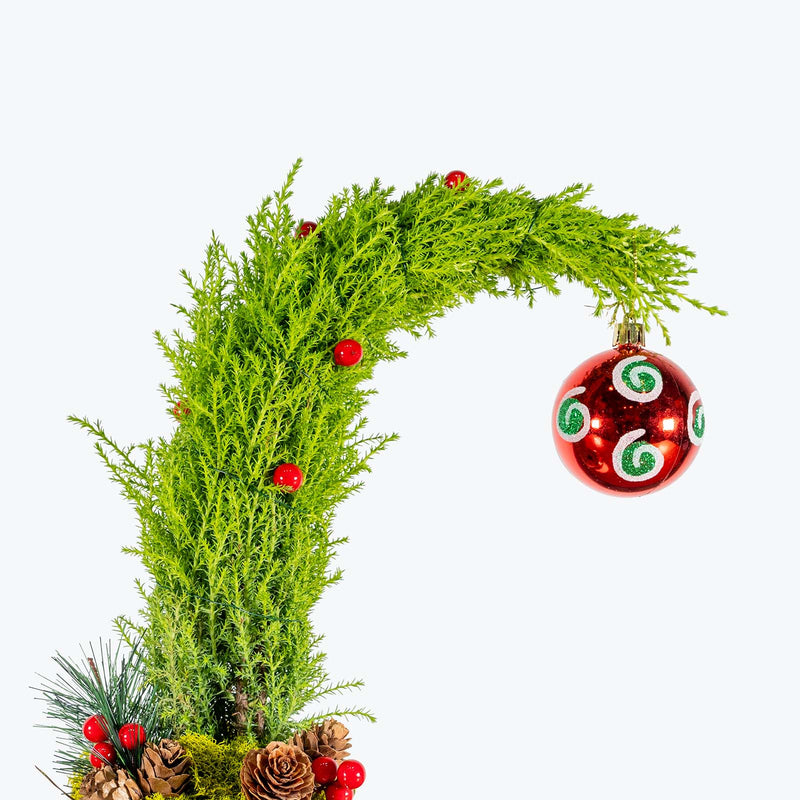
How to care for Grinchmas Tree
Grinchmas Tree enjoys some direct sun, but they'll also do well in bright, indirect light. It is best to place this plant somewhere where it will receive some nice morning sun, or a couple hours of afternoon sun, and then indirect light the rest of the day.
Grinchmas Tree will do best in bright light. A nice bright place inside your home would be on the window sill or a stool that is right next to a window, either with or without blinds, depending on if the plant can handle sun. Remember that plants will grow based on how much light they receive.
Grinchmas Tree likes the soil to stay consistently moist, but not soaking wet. Give them water whenever just the surface of the soil is starting to get dry. Expect to water more often in brighter light and less often in lower light.
Grinchmas Tree can live in any average home humidity condition and are fairly hardy.
Because Grinchmas Tree is a pot-grown tree, don’t throw yours away after Christmas. It will live very happily outside, growing a bit bigger each year and providing you with a larger tree every Christmas. It can be moved outdoors in the early spring but needs to be hardened off by gradually exposing it to outdoor conditions once again.
Grinchmas Tree is moderately toxic and can cause some adverse reactions when ingested so it is best to not let your pets eat it, which we advise for all plants in general. The severity of the reaction will depend on how much of the plant is ingested but, if you know your pet typically does not eat your plants, this plant will be suitable for your home..
View PlantGryphon Begonia
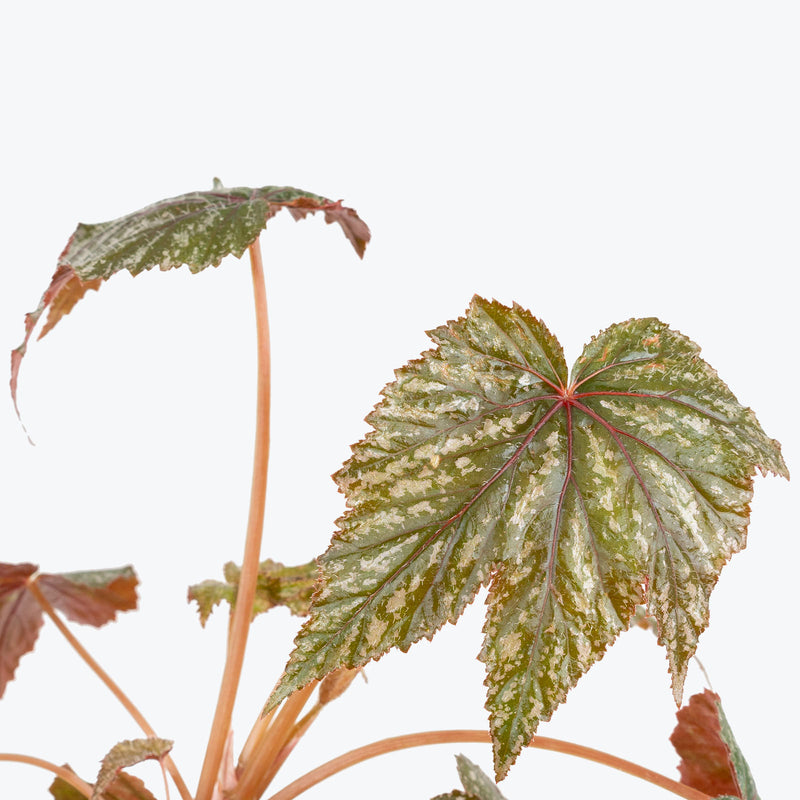
How to care for Gryphon Begonia
Gryphon Begonia should not be in a position to see the sun directly, although early morning or late evening sun is fine. Filtered sunlight through a sheer curtain is best and most homes are comprised primarily of indirect sunlight. The best spot for them is where they do not see the sun during the majority of the day but still get bright, indirect light.
Gryphon Begonia will thrive in bright light, but also can tolerate medium light. A good medium-light place in your home would be in the middle of a room that has a regular size window. They can be placed anywhere between the middle of the room and the window. Remember that plants will grow based on how much light they receive.
Gryphon Begonia needs to be watered when the top half of the soil is dry to the touch. That usually takes about 1 week in an average home environment. It will vary depending on the time of year, your environment and lighting conditions, but it's always safer to underwater or give the soil a check before you water again. Expect to water more often in brighter light and less often in lower light.
Gryphon Begonia will do well in average humidity environments but will appreciate a little bit of humidity if provided, give them a mist daily or get a humidifier.
Gryphon Begonia thrives on consistency — avoid swinging between very wet and very dry soil. While it tolerates lower light than many other begonias, its silver variegation will be more pronounced in bright, indirect light. If leaves start drooping or yellowing at the base, check for overwatering. Rotate the pot weekly to keep the plant symmetrical, as it tends to grow toward its light source. Since Gryphon prefers a bit of humidity but not wet leaves, skip misting and opt for a nearby pebble tray instead. During the growing season, pinch off any faded leaves to help the plant direct energy into fuller growth.
Gryphon Begonia is moderately toxic and can cause some adverse reactions when ingested so it is best to not let your pets eat it, which we advise for all plants in general. The severity of the reaction will depend on how much of the plant is ingested but, if you know your pet typically does not eat your plants, this plant will be suitable for your home..
View PlantGuava Tree
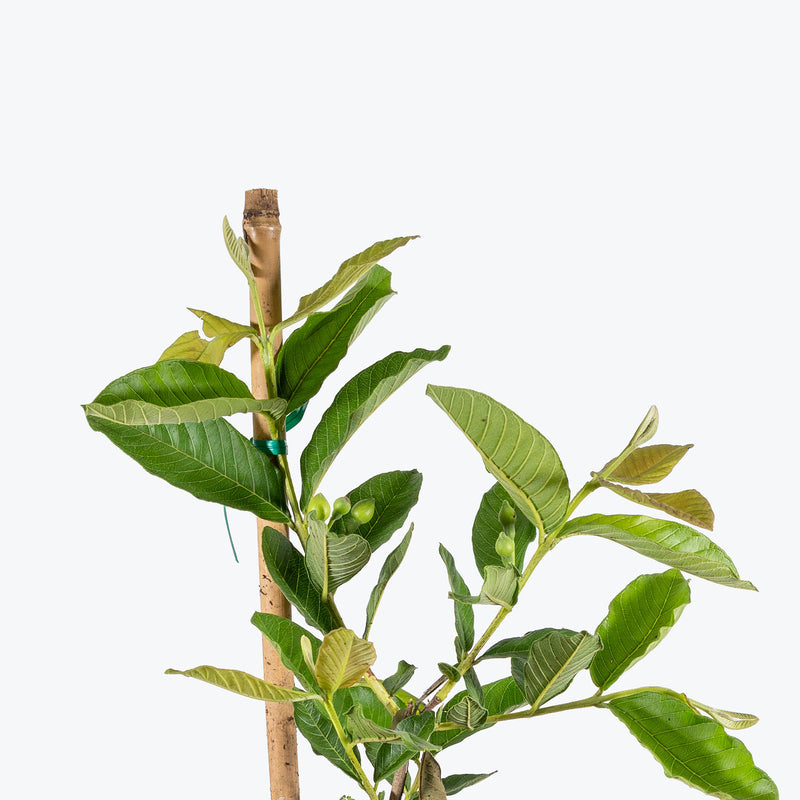
How to care for Guava Tree
Guava Tree loves as much sun as possible. The best spot for them is where they can see the sun during the majority of the day.
Guava Tree will do their best and flower profusely in bright light. A nice bright place outside would be on a sunny balcony, deck, or backyard; inside your home, it would do best in a sunny window sill. Remember that plants will grow and flower based on how much light they receive.
Guava Tree needs to be watered when the top half of the soil is dry to the touch. That usually takes about 1 week in an average home environment. It will vary depending on the time of year, your environment and lighting conditions, but it's always safer to underwater or give the soil a check before you water again. Expect to water more often in brighter light and less often in lower light.
Guava Tree can live in any average home humidity condition and are fairly hardy.
Guava tree thrives in full sun, warm temperatures, and slightly acidic, well-draining soil. For best fruit production, fertilize every 4–6 weeks during the growing season with a balanced fruit tree fertilizer. If growing in containers, choose a pot large enough to support root growth and repot every 2–3 years. Prune lightly to shape or to control size — they can be kept small and bushy or trained into a tree form. If overwintering indoors, place near a sunny window and reduce watering while dormant.
You can feel comfortable having Guava Tree around your home in the potential case where your pet feels like nibbling on it. However, we typically recommend keeping your pets from eating any of your houseplants..
View PlantGymnocalycium Mihanovichii Daydream
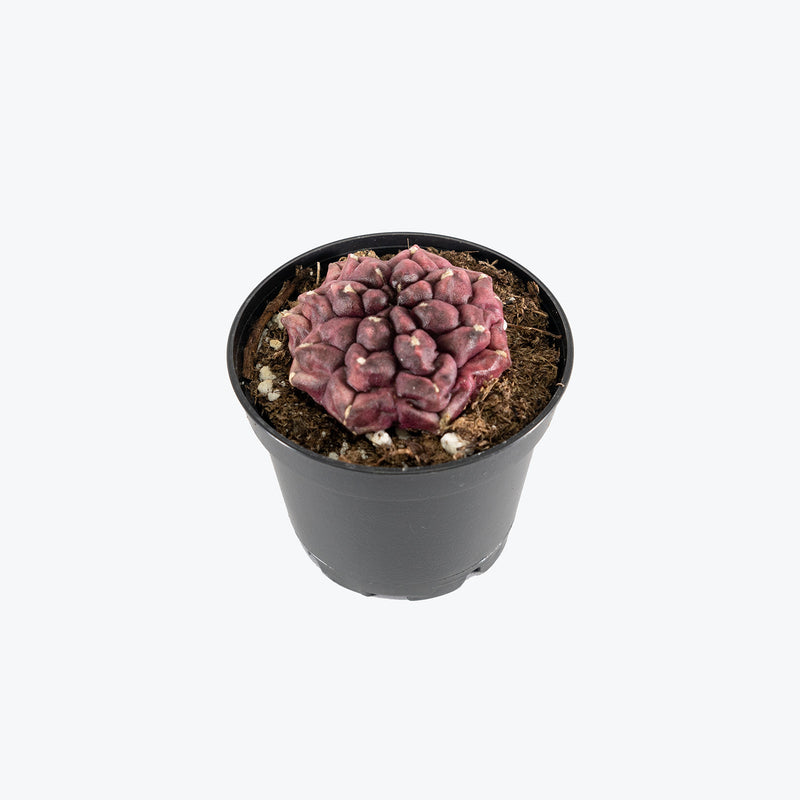
How to care for Gymnocalycium Mihanovichii Daydream
Gymnocalycium Mihanovichii Daydream enjoys some direct sun, but they'll also do well in bright, indirect light. It is best to place this plant somewhere where it will receive some nice morning sun, or a couple hours of afternoon sun, and then indirect light the rest of the day.
Gymnocalycium Mihanovichii Daydream will thrive in bright light, but also can tolerate medium light. A good medium-light place in your home would be in the middle of a room that has a regular size window. They can be placed anywhere between the middle of the room and the window. Remember that plants will grow based on how much light they receive.
Gymnocalycium Mihanovichii Daydream likes the soil to be completely dry before the next watering. This can take up to 4 weeks in an average home environment but it will vary depending on the time of year, your environment and lighting conditions. For them, it's always safer to underwater or water when you see signs of lack of water (i.e. wrinkly or soft leaves). Water a little more often in the warmer months.
Their humidity requirement is low, so do not mist Gymnocalycium Mihanovichii Daydream or put them in a terrarium.
Be sure not to water directly on the plant itself, but rather on the soil around the plant, because if water gets into the folds, it may lead to rot. Gymnocalycium Mihanovichii Daydream also prefers to have a crowded home, which means you can repot in the same pot for several years. Ensure the plant is in well-draining cactus soil to prevent water retention around the roots. If grafted, check occasionally for signs of stress or weakening at the graft union.
Gymnocalycium Mihanovichii Daydream is moderately toxic and can cause some adverse reactions when ingested so it is best to not let your pets eat it, which we advise for all plants in general. The severity of the reaction will depend on how much of the plant is ingested but, if you know your pet typically does not eat your plants, this plant will be suitable for your home..
View PlantGymnocalycium Mihanovichii Variegata
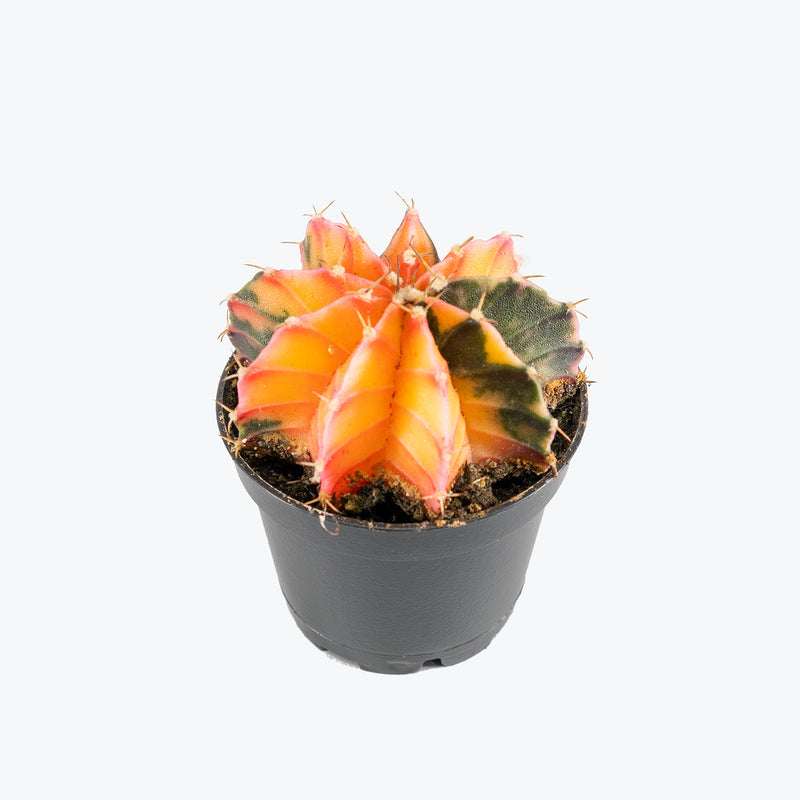
How to care for Gymnocalycium Mihanovichii Variegata
Gymnocalycium Mihanovichii Variegata enjoys some direct sun, but they'll also do well in bright, indirect light. It is best to place this plant somewhere where it will receive some nice morning sun, or a couple hours of afternoon sun, and then indirect light the rest of the day.
Gymnocalycium Mihanovichii Variegata will thrive in bright light, but also can tolerate medium light. A good medium-light place in your home would be in the middle of a room that has a regular size window. They can be placed anywhere between the middle of the room and the window. Remember that plants will grow based on how much light they receive.
Gymnocalycium Mihanovichii Variegata likes the soil to be completely dry before the next watering. This can take up to 4 weeks in an average home environment but it will vary depending on the time of year, your environment and lighting conditions. For them, it's always safer to underwater or water when you see signs of lack of water (i.e. wrinkly or soft leaves). Water a little more often in the warmer months.
Their humidity requirement is low, so do not mist Gymnocalycium Mihanovichii Variegata or put them in a terrarium.
Be sure not to water directly on the plant itself, but rather on the soil around the plant, because if water gets into the folds, it may lead to rot. Gymnocalycium Mihanovichii Variegata also prefers to have a crowded home, which means you can repot in the same pot for several years. Ensure the plant is in well-draining cactus soil to prevent water retention around the roots. If grafted, check occasionally for signs of stress or weakening at the graft union.
Gymnocalycium Mihanovichii Variegata is moderately toxic and can cause some adverse reactions when ingested so it is best to not let your pets eat it, which we advise for all plants in general. The severity of the reaction will depend on how much of the plant is ingested but, if you know your pet typically does not eat your plants, this plant will be suitable for your home..
View Plant



